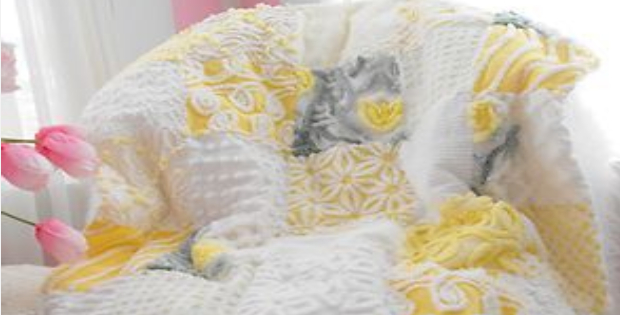My Read On Using Fleece Or Flannel For Backing Fabric

Tips for using fleece, flannel or nappy knits for backing fabric
You know me by now, I love cuddly baby quilts using flannel, or nappy knits like Minky. They’re great for the snuggliest quilts. But I read just recently that it can present challenges for longarm quilters especially, because of their stretchiness and grainline. Both the flannel and Minky knit fabrics will leave your sewing room in a cloudy puff of lint, even with a domestic machine. Have a vacuum at arms length, wear a light-colored shirt when you work with these lint shedding fabrics, or else you’ll look like someone blew a blowball (Dandelion) all over you, but without the wish.

To me, getting the grainline right makes the difference when it comes to finishing the quilt. I’ve noticed there’s not enough emphasis placed on the impotance of the grainline which is not that easy to an untrained eye. It took me a while to get mine perfect. If the grainline is even slightly out, or the maximum stretch used the wrong way, it wrecks a quilt. Then the bubble problem occurs when you quilt. In the end the binding becomes a nightmare. The quilt pattern pulls and there’s no going back. Ok, that’s my take…

This is what I read recently. Really helpful…
Each of these fabrics introduces unique properties that may require adjustments to the way you may normally quilt. However, the single common characteristic they all share is some degree of stretchiness.
Minky fabric stretches as much as three inches when pulled across the grain line but is mostly stable alone the lengthwise grain line. However, fleece stretches in both directions. It can stretch over three inches along the lengthwise grain, and as much as five inches or more along the cross grain. That’s why it is a popular fabric for active wear and outer wear. Flannel stretches more across the grain than most woven fabric due to its lower thread count and brushed texture, but it remains stable along the lengthwise grain.
For all of these unique fabric types, it’s good to make a test sandwich so that you can check your tension, adjust the pressure of your foot if needed, and find the appropriate stitch length. You should also quilt the test sandwich with the same density of quilting you intend to use for your main project to make sure the fabric still handles and drapes the way you want it to. Larger, more open quilting will help keep the quilt soft and cuddly.
These fabrics will typically look better with a longer stitch length of about 10 stitches per inch or so.
This keeps the nap from matting down and also helps reduce puckering that a shorter stitch length can cause. On fleece and Minky you may also find that polyester thread gives you better results than cotton since it is smoother and will glide through the fabrics better, reducing breakage and missed or skipped stitches.
If you haven’t ever tried one of these specialty fabrics before, keep an eye on the remnant bin at your local quilt shop and pick up a few pieces to try. Just two small swatches can make a cuddly car seat blanket for somebody’s bundle of joy, and you can gain some experience while wrapping a little one in warmth and love!
Read more here for longarm quilters.





